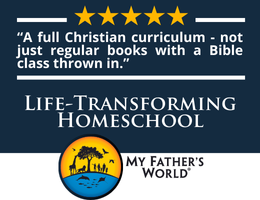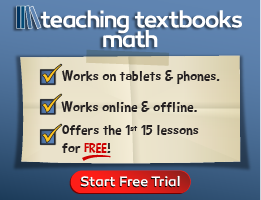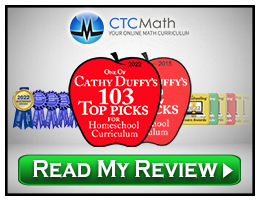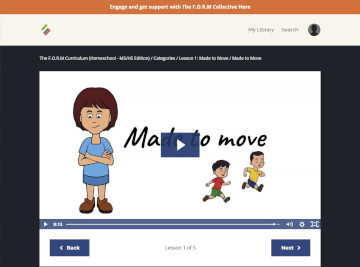F.O.R.M. is a holistic, physical fitness and health program that can be used with students from kindergarten through high school with versions for faith-based, independent, government-funded, and Christian home schools. I reviewed the version for Christian homeschooling families. You can choose either the elementary or middle and high school versions. When you sign up, you receive lifetime access, so you might use it over several years.
F.O.R.M. is an acronym that represents the four pillars of the program:
Functional Fitness - The program focuses on movement to maintain healthy body functioning and the ability to fulfill life goals. Along with physical exercises, students learn about body systems and how they work together to maintain fitness and health.
Optimal Nourishment - Nourishment lessons teach that food is fuel, while acknowledging that we sometimes eat just because something tastes great. Students are taught how to balance the use of food as both fuel and fun. They learn how different foods contribute to good nutrition and provide essential nutrients, as well as topics such as the importance of hydration and the dangers of excessive sugar consumption.
Rest and Recovery - Lessons include topics such as the importance of sleep, posture, stress management, stretching, and injury prevention and recovery.
Multiplied Maintenance - Since maintaining good health and physical fitness is a goal of the program, it covers topics such as the importance of community for good health, body image, food labels, mental health, lifestyle choices, and the dangers of media consumption. Note that this is not a complete health program.
The program is laid out in 32 modules (plus additional optional lessons for teens), with videos and material to read (online or offline) for all except the assessments. Modules begin with academic content (including a Christian devotional for middle school and teens) and are followed by a physical warm-up activity, movement training exercises, and a cool-down. Next, a “Fuel Challenge” makes a specific suggestion about nutrition or healthy eating.
The academic topics covered on the videos are the same for all levels, but videos for middle and high school students are lengthier. The warm-up and cool-down exercises are the same for all levels, but the movement training exercises each have four different exercises.
Each module should take about an hour to complete. Parents can schedule modules at whatever pace they want. The introductory video suggests that elementary students focus on lessons regarding only one pillar of the program each year, covering one module per month. (Personally, if I followed that schedule, I would repeat the exercises several times during the month.) High school students can complete one module per week to complete the entire program in one year. It’s also possible for high school students to complete the program in one semester, but that might not be as effective for developing lifelong habits. Middle school students might complete it in one year or more. All family members can use the program even if not on the same schedule. Older students can work independently, although parents might want to discuss questions from the devotionals with them.
The optional “PE Games and Sports Units” teach PE through games, sports skills, sports drills, and sports units (on basketball, soccer, volleyball, racquet sports, hockey, baseball, and throwing and catching games) provide additional activities that are best used with a group, although some activities can be used with only one or two children. Each of the four sections has a short video and a lengthy PDF with 35 to 74 pages of detailed instructions.
While you can use the academic and physical activity components of a module separately, the warm-up, movement training, and cool-down videos are to be used in sequence in a single session, whatever the age of the student. The video presenters show adaptations that make some exercises easier. No special equipment is required and the exercises are best done indoors. For at least the first few modules, most students will need to pause the videos after the demonstration of each exercise to actually do it. (There are too many for most students to be able to recall after watching an entire video.)
For an extra fee, students can also access more than 30 custom workouts to which they will have lifetime access.
An online (and downloadable) Teacher Guide has lesson summaries, key takeaways, questions, and action steps. The F.O.R.M. website makes it easy to preview all levels of the course without any obligation.
Differentiation for Middle and High School
To differentiate the content, there are several extra components for each module for middle and high school students. The videos for middle school run five to eight minutes, while those for high school run eight to fourteen minutes. A Christian Devotional Guide has a scripture passage, a reflection, and questions that students can answer independently or discuss with others. Students have two options for filling in blanks on “guided notes” pages they complete as they watch the instructional video or teaching slides. The much briefer, online version can be used with the instructional video. It has its own answer key and might be best for middle school. The optional teaching slides are great for teens since they reinforce and expand on key concepts from the video lesson. Students can print out guided notes pages (with twice as many questions) to be completed as they follow along closely with the teaching slides. (No answer keys are available since the information is on the slides.) The Fuel Challenge applications are also more advanced.
Modules for middle and high school conclude with an online, multiple-choice assessment that is automatically scored. High school students have twice as many questions as middle school students. (Students can retake assessments to improve their scores.)
Four optional modules for teens cover “Sexual Engagement and Reproduction,” “Social Health, Conflict, and Grief,” “Substance Abuse and Addiction,” and “Emotional Health,” all from a biblical worldview. These modules include one video, guided notes, teaching slides, and a teacher lesson guide. One or more of these modules should be very useful if those topics aren’t covered elsewhere in your curriculum.
Summary
F.O.R.M. covers a lot of ground, including nutrition, social interaction, and other topics along with physical fitness, but it doesn’t go in-depth. It seems especially light if you complete less than one module a week. However, the lighter schedule might be just what some families need for younger children. The program might be most useful for middle and high school students since they can complete the modules independently.










